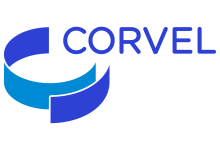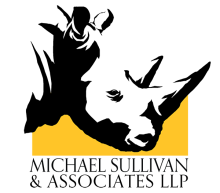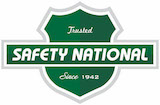Meet Santa Margarita Water District Santa Margarita Water District is a dynamic, forward-thinking agency dedicated to delivering high-quality potable water, recycled water, and wastewater services to its 200,000 customers across Southern Orange County. As one of the region’s largest and most impactful utilities, we are committed to the highest standards of transparency, innovation, and environmental stewardship. Our people drive our progress, innovation, and results. Our collaborative, human-first culture fosters the sense of fun, comradery, and a rewarding sense of purpose as we do work that matters. Dynamic teams of intelligent individuals work collaboratively to achieve SMWD’s goals and solve challenges with a common aim that fosters a unique bond that is not often found in governmental agencies. Santa Margarita Water District’s values include: Exemplary service excellence Intelligent innovation that is forward-thinking and adaptive Ethical fiscal responsibility and transparency Environmental and resource stewardship Employee development and leadership training Building relationships that strengthen communities
This position is contingent upon approval of 2025-2026 fiscal budget. The Santa Margarita Water District is seeking a Safety and Risk Analyst in the Human Resources department to support and coordinate health, safety, and risk management programs to ensure compliance with local, state, and federal regulations. Class specifications are intended to present a descriptive list of the range of duties performed by employees in the class. Specifications are not intended to reflect all duties performed by individual positions JOB SUMMARY Under general supervision, assists in developing and coordinating the implementation of occupational health and safety programs to meet applicable regulations and compliance requirements; works with managers on occupational health and safety compliance processes; assists with a variety of technical and analytical safety and health activities, including but not limited to workers' compensation reporting, audits, accident investigations, risk management, and FMCSA compliance; and performs related duties as assigned. The Safety Analyst performs a variety of professional duties, administering the District’s health and safety program, workers’ compensation, and FMCSA-DOT programs to ensure compliance with applicable workplace safety and environmental regulations, as well as the timely completion of mandatory training requirements by all applicable employees. The incumbent is expected to coordinate Agency-wide health and safety programs, projects, activities, and perform assigned duties with initiative and sound judgment. DISTINGUISHING CHARACTERISTICS The Safety & Risk Analyst position is distinguished from the Safety & Risk Manager position in that the Safety & Risk Manager is responsible for developing, implementing, and managing the Safety and Risk Division, which requires seasoned judgment, receives minimal oversight, and displays a high degree of independence. This position typically reports to the Safety & Risk Manager or their designee. Essential Functions: ESSENTIAL FUNCTION STATEMENTS The duties listed below are intended only as illustrations of the various types of work that may be performed. The omission of specific statements of duties does not exclude them from the position if the work is similar, related, or a logical assignment to this class. Assists in developing and implementing employee health and safety programs, including but not limited to ergonomics, industrial safety, occupational health and safety, fire protection, traffic and vehicle safety, hazardous materials and environmental hazard abatements to ensure compliance with District safety ordinances, policies, and all local, state, and federal laws, codes, and regulations for employee occupational health and safety, workers’ compensation, disaster and emergency preparedness, and risk management. Supports the implementation of policies, procedures, and programs to comply with regulatory requirements and to prevent incidents of employee accidents and injuries; monitors safety program compliance; conducts thorough review of accidents, prepares written analyses, ensures applicable management personnel are informed, conducts field visits and makes recommendations; reviews documentation of accident investigations and ensures follow-up corrective action, when applicable; assists with the investigation of complaints regarding safety issues; analyzes data to identify trends; creates a variety of safety-related reports including mandatory state and federal OSHA reports, records, plans and records of inspection activities which may include Safety Training Records, Hazard Communication Program Documentation, Personal Protective Equipment Records, Emergency Action Plans, Safety Audits and Inspections, Exposure Monitoring Records, Self-Insurance Reporting, and OSHA Forms 300 and 300A. Works in conjunction with the Safety & Risk Manager to administer the District’s Workers’ Compensation program; authorizes occupational treatment at District approved clinic; files and manages claims with the third-party administrator, conducts investigations into injuries or illnesses; evaluates modified work arrangements, interacts with claims adjusters, occupational health providers, supervisors and employees, and assists with the interactive process for ADA related situations. Works with CalPERS on disability retirement applications. Assists Safety & Risk Manager with reviewing and evaluating the District’s Safety Rules and Regulations as well as the Injury and Illness Protection Plan to ensure accuracy and relevancy. Assists in ensuring the District’s safety policies are current and assists with communicating policy changes to management and employees. Helps coordinate planned and periodic inspections and site audits of District facilities and operations to identify security, safety, environmental, and hazardous substance hazards as required under Title 19 ;prepares reports and documentation of findings and recommendations for action to ensure compliance with state and federal regulations. Works with departments to implement equipment modifications to resolve safety problems; advises management on the creation and implementation of safety programs and policies, ensuring a safe and compliant workplace environment. Assists with employee accidents and injuries, including but not limited to; responding to employee injuries, vehicle accidents, near misses, and hazardous waste incidents; preparing injury reports, reviewing accident trends, administering post-accident drug and alcohol testing, and conducting accident debriefs. Supports the administration of the District’s Workplace Violence Prevention Program; schedules and assigns training; adheres to the provisions of the program, and makes suggested updates as applicable. Participates in maintaining the District’s Emergency Response Plan and the Emergency Operation Plan and assists in ensuring the readiness of the District’s Emergency Operations Center (EOC). Participates in the coordination, scheduling, and administration of the annual emergency response preparedness drills. Assists with maintaining District’s safety records and Cal-OSHA 300 and 300A logs and any other injury-related and/or self-insurance reporting documents. Supports the facilitation of the District’s Ergonomic Program, schedules workplace ergonomics evaluations for employees as-needed. Administers the District’s FMCSA compliance program relative to the Department of Transportation (DOT) requirements for commercial license holders; conducts drug and alcohol testing; reviews DMV pull notices to ensure driver eligibility for continued employment, and enrolls and maintains FMCSA driver list. Supports the District’s safety committee initiatives; collaborates with other departments, coordinates meetings, and maintains records for training, policy changes, and note-keeping. Coordinates medical programs (vaccinations, respiratory, and hearing tests) for job-specific job classifications; makes recommendations based on results; maintains records for immunizations, training, and work-related medical issues. Prepares and monitors budget and strategic goals; monitors expenditures and requests payment on invoices and requisitions. Operates assigned vehicles skillfully and safely; observes safe driving practices; operates a wide variety of hand and power tools and equipment related to work assignments and demonstrations. Performs related duties and responsibilities as required. QUALIFICATIONS Any combination of experience and training that would likely provide the required knowledge and abilities is qualifying. A typical way to obtain the knowledge and abilities would be: Education, Training, and Experience: Graduation from an accredited four-year college or university with major coursework in occupational health and safety, safety, environmental engineering, or a related field, and at least three years of progressively responsible experience in administering employee health and safety programs; or an equivalent combination of training and experience. Experience in a public agency administering Cal/OSHA regulations, workers’ compensation, risk management, and field training is preferred. Licenses; Certificates; Special Requirements: Possession of or the ability to obtain a valid California Class C driver’s license and the ability to maintain insurability under the District’s vehicle insurance program. Annual certification for CPR, First Aid, Confined-Space Entry, and use of Self-Contained Breathing Apparatus (SCBA) per OSHA requirements, and FEMA-NIMS Incident Command (ICS) Training for ICS is required for some assignments. Preferred certifications include: Certified Safety Professional (CSP), Certified Industrial Hygienist (CIH) designation, or similar professional certification. Certifications issued by the American Water Works Association (AWWA) or recognized industrial safety organizations on topics relevant to conducting specific safety training courses and responding to hazardous materials and waste operations incidents. Associate in Risk Management (“ARM”) is highly desirable. Knowledge of: Principles, policies, practices, and methods for developing and administering an employee health and safety program. Principles, practices, and trends in the field of emergency and disaster management for a water utility. Applicable federal, state, and local laws, regulations, and guidelines pertaining to employee health and safety programs including Occupational Safety &Health Administration (OSHA) and the Health Insurance Portability and Accountability Act (HIPPA) requirements. Workers’ Compensation administration, policies, procedures, and regulations. Methods and practices for conducting accident and workplace safety audits and investigations. District safety rules, policies, and procedures. District operations and associated potential health and safety issues and mitigation/avoidance opportunities. Standard safety equipment used in utility and public works occupations. Federal Motor Carrier Safety Administration (FMCSA), Department of Transportation (DOT), Commercial Driver’s License compliance administration. Research methods and statistical analysis techniques. Principles and practices of sound business communications. District human resources policies and labor contract provisions. Safety policies and safe work practices applicable to the work being performed at the District. Ability to: Support the administration of comprehensive safety and environmental health programs. Analyze emergency situations and respond appropriately to ensure the protection of District staff and the public. Collaborate with managers and provide advice and counsel to develop solutions on safety concerns. Organize, set priorities, and exercise sound independent judgment within areas of responsibility. Communicate effectively, both orally and in writing. Understand, interpret, explain, and apply applicable laws, codes, and ordinances. Operate a computer, standard business software, and a variety of computer software programs and databases related to the area of assignment. Use tact and diplomacy in dealing with sensitive and complex issues. Establish and maintain effective working relationships with all those encountered in the course of work. Interpret driving records from the Department of Motor Vehicles and apply DOT/FMCSA guidelines to maintain compliance. Establish and maintain accurate files and records. Safely operate a District vehicle on city streets and freeways. Visit different work sites and locations for various trainings, demonstrations, and audits. Operate and maintain various hand and power tools and equipment. Additional Information: PHYSICAL AND MENTAL DEMANDS The physical and mental demands described here are representative of those that must be met by employees to successfully perform the essential functions of this class. Reasonable accommodations may be made to enable individuals with disabilities to perform the essential functions. Physical Demands While performing the duties of this job, the employee is regularly required to sit, walk and stand; talk and hear; use hands to finger, handle, feel or operate objects, tools or controls; reach with hands and arms; perform repetitive movements of hands or wrists; climb or balance on ladders or stairs; stoop, kneel, bend at the waist, crouch or crawl; and smell. The employee is frequently required to lift up to 50 pounds unaided. Specific vision abilities required for this job include close vision, distance vision, use of both eyes, depth perception, color vision and the ability to adjust focus. Employees in this class may be periodically required to wear Self-Contained Breathing Apparatus (SCBA). In accordance with OSHA regulations, employees are prohibited from having facial or head hair that impairs the effectiveness of respirator equipment. Reasonable accommodations may be made to enable individuals with disabilities to perform essential duties of the class as they relate to this requirement. Mental Demands While performing the duties of this class, an employee uses written and oral communication skills; reads and interprets data, information and documents; analyzes and solves problems; uses math and mathematical reasoning; observes and interprets people and situations; learns and applies new information and skills; performs highly detailed work; deals with changing deadlines, constant interruptions and multiple concurrent tasks; and interacts with others encountered in the course of work. WORK ENVIRONMENT The employee works in an office and field environment where the noise level is usually moderately quiet. The employee frequently works in outdoor weather conditions subject to extreme heat or cold, in confined spaces, near moving mechanical parts and equipment, and heavy traffic. The employee is frequently exposed to fumes or airborne particles and toxic or caustic chemicals, and is occasionally exposed to loud or prolonged noise and equipment with heavy vibrations. The employee may be required to respond to emergency calls and situations.
Education, Training, and Experience: Graduation from an accredited four-year college or university with major coursework in occupational health and safety, safety, environmental engineering, or a related field, and at least three years of progressively responsible experience in administering employee health and safety programs; or an equivalent combination of training and experience. Experience in a public agency administering Cal/OSHA regulations, workers’ compensation, risk management, and field training is preferred. Licenses; Certificates; Special Requirements: Possession of or the ability to obtain a valid California Class C driver’s license and the ability to maintain insurability under the District’s vehicle insurance program.










